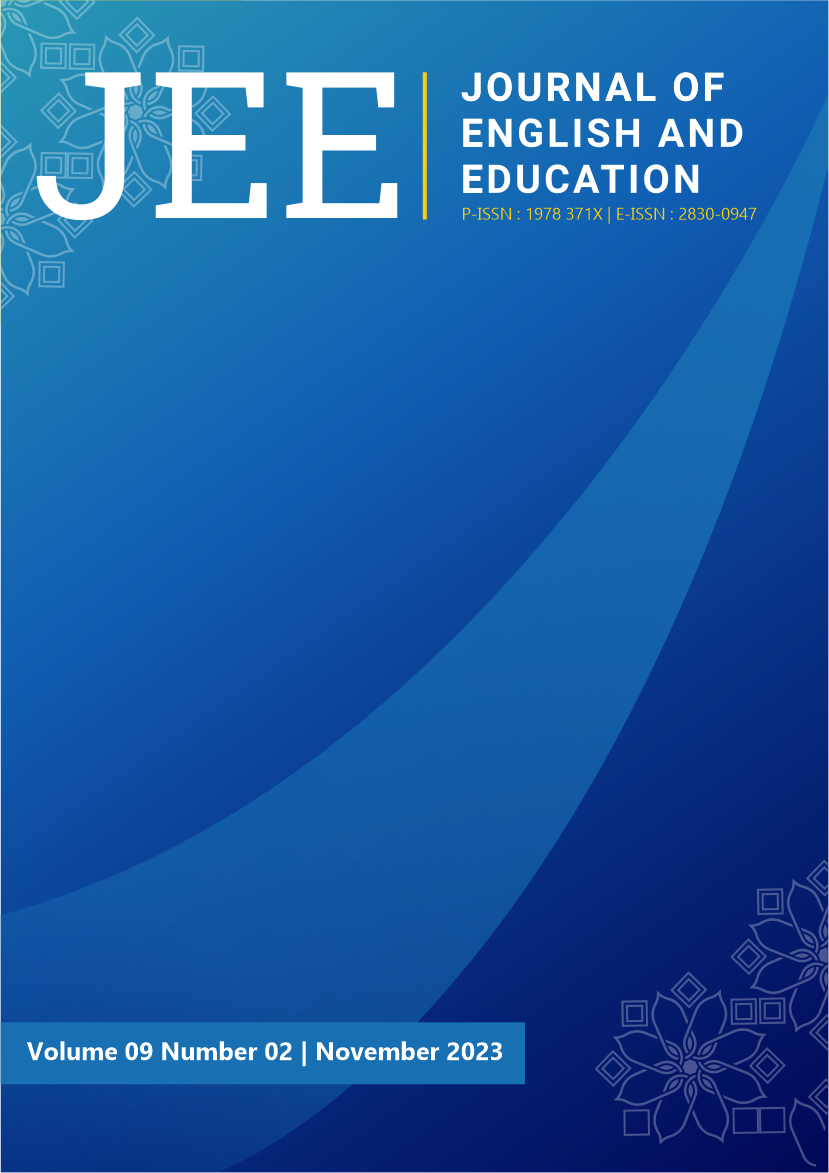Main Article Content
Abstract
In reality, many English learners find it difficult to speak and to express their idea in English. Knowing less vocabulary, lack of self confidence, and pronunciation’s error have mostly become the most popular reasons of the students to always keep their briliant ideas to speak. It was proven by the current research at one of senior secondary school in Jember which the students also have the same problems as mentioned above. Therefore, the objective of this research was to enhance senior secondary students’ speaking skill. The researcher employed classroom action research as the research design. This research was conducted at one of senior high schools in Jember, East Java, Indonesia. The data were collected from 18 students in one class and from one cycle of teaching which consisted of five sessions. The cycle covered four stages, including plan, action, observation, and reflection. The result of this research showed that the students’ speaking skills were improved for nineteen percents (19%) after the implementation of video-assisted guided conversation. It was validated by the students’ average score which has improved from sixty seven to eighty. It indicates that the use of video-assisted guided conversation could enhance students speaking skills.
Keywords
Article Details

This work is licensed under a Creative Commons Attribution-ShareAlike 4.0 International License.
References
- Bajrami, L., & Ismaili, M. (2016). The Role of Video Materials in EFL Classrooms. Procedia - Social and Behavioral Sciences, 232, 502–506. https://doi.org/10.1016/j.sbspro.2016.10.068
- Brown, D. H. (2001). Teaching by Principles: An Interactive Approach to Language Pedagogy. (2nd ed.). Longman.
- Burns, A. (2010). Doing Action Research in English Language Teaching. Routledge.
- Burns, M. (2011). Distance Education for Teacher Training: Modes, Models, and Methods (2nd Edition) (2nd ed.). Education Development Center.
- Harmer. (2001). The Practice of English Language Teaching (3rd ed.). Longman: Pearson Education Limited.
- Harris, & David, P. (1969). Testing English as a Second Language. Mc. Graw Hill.
- Herlina, H., & Holandiyah, M. (2016). Teaching Speaking Skill By Using Guided Conversation Technique Through Pair Taping To The Seventh Grade Students of SMP PTI Palembang. Edukasi: Jurnal Pendidikan Dan Pengajaran, 2(2). https://jurnal.radenfatah.ac.id/index.php/edukasi/article/view/602
- Molinsky, S. J., & Bliss, B. (1983). Side By Side Book 1A: English through Guided Conversations. Prentice Hall.
- Randong, F. A., Marbun, R., & Novita, D. (2013). Improving Students Ability In Speaking About Asking And Giving Opinion Through Guided Conversations. Jurnal Pendidikan Dan Pembelajaran Untan, 2(1).
- Richards, J. C. (2008). Teaching Listening and Speaking; From Theory to Practice. Cambridge University Press.
- Sitepu, N. (2017). Improving The Student’s Speaking Ability By Applying Guided Conversation Strategy At The Eleventh Year Students Of Sma Muhammadiyah-2 Tanjung Sari Medan In 2016/2017 Academic Year. Universitas Islam Negeri Sumatera Utara.
- Subana, Rahadi, M., & Sudrajat. (2015). Statistik Pendidikan. Pustaka Setia.
- Sudjana. (2002). Metode statistika. Tarsito.
- Thornbury, S. (2002). How to teach vocabulary. Pearson Education Limited.
- Yasin, I. (2021). Students’ Perception Toward The Use of Zoom For Teaching Speaking. Language-Edu: Journal of English Teaching and Learning, 10(6).
References
Bajrami, L., & Ismaili, M. (2016). The Role of Video Materials in EFL Classrooms. Procedia - Social and Behavioral Sciences, 232, 502–506. https://doi.org/10.1016/j.sbspro.2016.10.068
Brown, D. H. (2001). Teaching by Principles: An Interactive Approach to Language Pedagogy. (2nd ed.). Longman.
Burns, A. (2010). Doing Action Research in English Language Teaching. Routledge.
Burns, M. (2011). Distance Education for Teacher Training: Modes, Models, and Methods (2nd Edition) (2nd ed.). Education Development Center.
Harmer. (2001). The Practice of English Language Teaching (3rd ed.). Longman: Pearson Education Limited.
Harris, & David, P. (1969). Testing English as a Second Language. Mc. Graw Hill.
Herlina, H., & Holandiyah, M. (2016). Teaching Speaking Skill By Using Guided Conversation Technique Through Pair Taping To The Seventh Grade Students of SMP PTI Palembang. Edukasi: Jurnal Pendidikan Dan Pengajaran, 2(2). https://jurnal.radenfatah.ac.id/index.php/edukasi/article/view/602
Molinsky, S. J., & Bliss, B. (1983). Side By Side Book 1A: English through Guided Conversations. Prentice Hall.
Randong, F. A., Marbun, R., & Novita, D. (2013). Improving Students Ability In Speaking About Asking And Giving Opinion Through Guided Conversations. Jurnal Pendidikan Dan Pembelajaran Untan, 2(1).
Richards, J. C. (2008). Teaching Listening and Speaking; From Theory to Practice. Cambridge University Press.
Sitepu, N. (2017). Improving The Student’s Speaking Ability By Applying Guided Conversation Strategy At The Eleventh Year Students Of Sma Muhammadiyah-2 Tanjung Sari Medan In 2016/2017 Academic Year. Universitas Islam Negeri Sumatera Utara.
Subana, Rahadi, M., & Sudrajat. (2015). Statistik Pendidikan. Pustaka Setia.
Sudjana. (2002). Metode statistika. Tarsito.
Thornbury, S. (2002). How to teach vocabulary. Pearson Education Limited.
Yasin, I. (2021). Students’ Perception Toward The Use of Zoom For Teaching Speaking. Language-Edu: Journal of English Teaching and Learning, 10(6).

